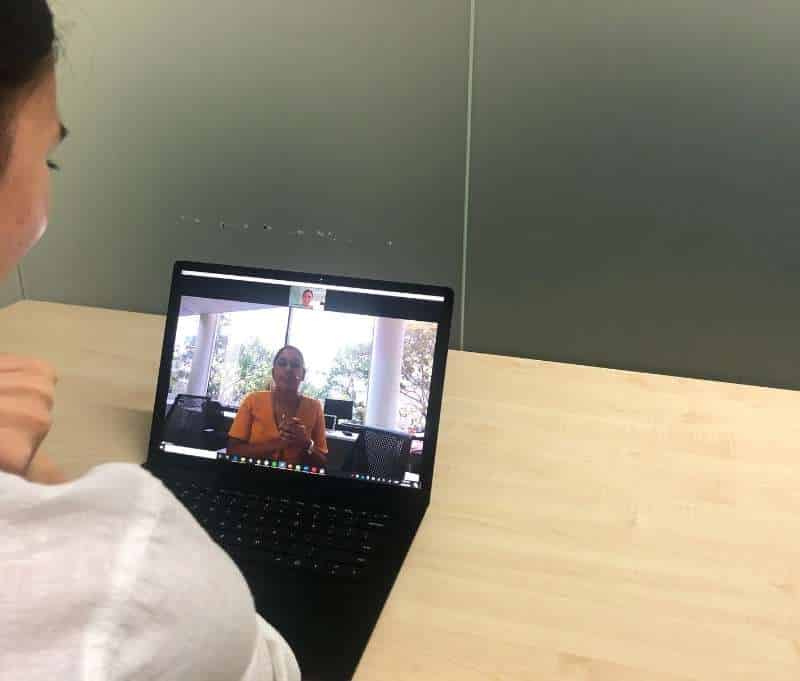The Benefits & Challenges of Online Learning
31 March 2020
The beauty of living in the digital age – online education!
This mode of education is becoming more and more popular amongst students around the world, regardless of age, and Speaking Schools Australasia has worked on consistently improving our online programs for many years now! While some are still resistant, or perhaps express skepticism towards online learning, there are plenty of benefits that are made available to all who are open to it – as well as a few challenges that go with it!
Let’s start with the big pluses…
Increased Flexibility
The biggest advantage to studying online is the increase in flexibility. At a time where parents are potentially home schooling, and trying to still fulfil working commitments, online courses offer far more flexibility.
Although there may be some suggested time slots, generally, most education providers offer multiple dates and times for parents and children to choose from, all of which can be done wherever you happen to be. This will also create space for completing other educational commitments – and of course, getting them to help out with the chores!
Ease of Access
All you need to study online is a computer with internet access.
All of your study materials are sent to you via email. Video conferencing software – such as Zoom – is usually very user-friendly, and allows students and teachers to meet online and conduct engaging and interactive lessons without compromising one’s health. And Learning Management Software (LMS for short) can help engage students and assess their progress.
There really is so much out that that makes isolation that much easier!
Saying Goodbye to Commuting!
How many times have you found yourself stressed and feeling the pressure mounting because you missed the bus or train, or are stuck in traffic knowing there’s no way out?
Well, online learning helps us combat this – no more traffic jams, no more chasing buses down the street or jumping through the train doors at the last minute, simply moving to our computer and viola – get started! And, while it’s good for your pocket and stress levels, we also help reduce our carbon footprint!
More Affordable
Many online courses are a priced more competitively than physical programs – partly because there is no longer any need to rent venues, but also partly to help families through a very challenging time.
…but don’t forget the challenges!
There are of course some challenges that come with it, but we can work together to overcome theses as best we can.
Face-to face social interaction
One of the biggest disadvantages of isolation more generally is the lack of face-to face social interaction. This is especially important for young children who are very dependent on connecting with others and building relationships.
Luckily, many apps (such as Zoom) allow for plenty of interaction – both when presenting to peers, but also through functions like ‘Breakout Rooms’ which allow them to participate in small group activities.
These virtual rooms allow children to work in teams and share a laugh or two along the way!
Available Choices
There will be a limit on many types of courses on offer in our digital classroom as some courses need to be taught within a physical space – it is hard to learn rugby, robotics or the recorder without someone physically assisting in the room.
Thankfully there are still plenty of choices out there – coding, yoga and public speaking among them – which mean there are still some opportunities to develop even when at home!
Sedentary Lifestyle
It is a modern problem that each of us are facing – whether in the digital or non-digital world.
As a society, we simply spend too much time sitting, and not enough time moving.
A great way to overcome this hurdle is set alarm for every hour – when your child hears the bell ring, join each other and get up and stretch. Walk about the room, go outside to the garden or balcony, and breath in some fresh air.
And when lunch time hits, try incorporate less eating and more moving. Have a light meal after going for a walk or bike ride; get on YouTube and do a dance class; whatever floats your boat – just get moving! Students will return to the screen feeling revitalised and much more focused.
If you take regular and proper breaks (no scrolling through phones!), you’re much less likely to feel lethargic after a day of online learning!
Give it a try
Online learning is a great tool that can be used to help support our students and parents alike and Speaking Schools Australasia hopes to continue to work with our existing community, as well as welcoming any new members.
Check out our online programs to see what we’re offering, and how we’re overcoming the challenges above!



